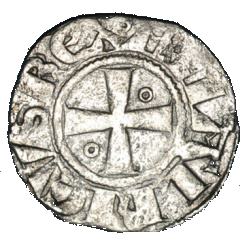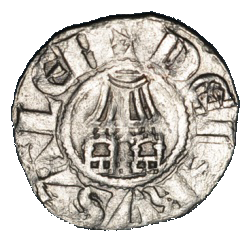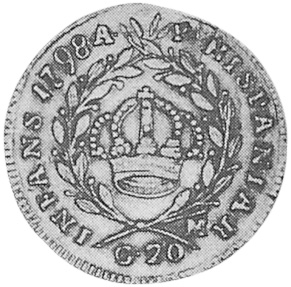The Crusaders issued coins for the Kingdom of Jerusalem, as well as Jaffa, Ascalon and Akko. A Jerusalem silver denier features the Cross of Jerusalem and the Holy Sepulchre; the Latin inscriptions read AMALRICVS REX (Amalric I, 1162-1173) and DE IERVSALEM (Jerusalem). (#131) A later denier, issued by Baldwin IV (1173-1185) pictures the Tower of David. (#132)


#131 Holy Sepulchre on Crusader Denier (Rogers, Pl. VII, 9)

#132 Tower of David on Crusader Denier (Rogers, Pl. VII, 10)
Surprisingly, for nearly 150 years, the Crusader Kingdoms issued gold bezants that imitated the Arab dinars - even including blundered Arabic inscriptions praising Muhammad and his teachings. For instance, a gold coin attributed to Baldwin II (1118-1136) or later, Acre mint, imitates a dinar or bezant of Caliph Al-Amir bi-Ahkami'l-Lah (1096-1130). (#133)


#133 Crusader dinar or dezant of Baldwin II.
Long after the Kingdom of Jerusalem had fallen, the Crusader Kings of Cyprus retained the title "King of Jerusalem and Cyprus" on their coins. Their silver gros usually depicts the king sitting on a throne, holding a sceptre and orb, with the Cross of Jerusalem on the reverse. The coin pictured was issued by Henry II (1285-1324). (#134)

#134 Crusader Gros
Finally, the title "King of Jerusalem" was appropriated by the Kings of Sicily, who were of the Cypriot Lusignan dynasty. The title can be found in an abbreviated form (IER) on their coins through 1861, when the unified country of Italy was established. An example is the 1819 5 Lire issued by Victor Emanuel I. (#135)


#135 Ferdinando IV, King of Sicily and Jerusalem, 1798
© 2020-Mel Wacks